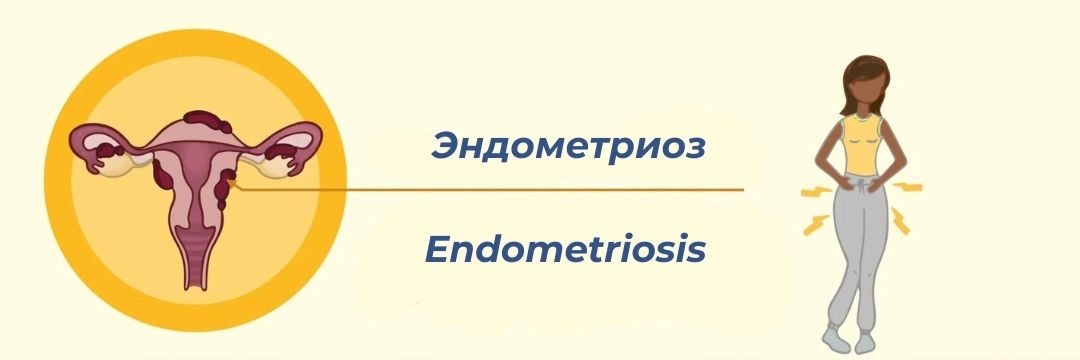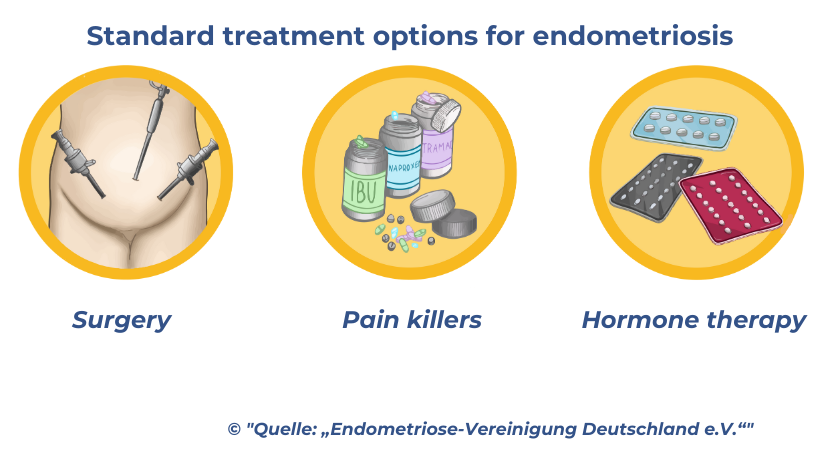
The growth of endometrium-similar tissue outside the womb causes severe pain. A procedure that helps to relieve women of one of the most troublesome endometriosis manifestations has been developed in Giessen (Germany).
The "chameleon" of gynecology: difficult to distinguish and hard to treat
Endometriosis is a widespread disease and one of the most frequent gynecological issues. According to statistics, the condition occurs in at least ten percent of all women. It often "mimics" other diseases, and is therefore often compared to a chameleon which is difficult to distinguish.
What it is and how it manifests itself
In endometriosis, tissue similar to the one that lines the uterus grows outside it the abdominal cavity, for example in the ovaries, intestines or bladder. Due to the abnormal overgrowth, inflammation starts and adhesions form. The process is a frequent cause of infertility.
The characteristic symptoms of the disease include:
- severe and prolonged cramps during menstruation;
- chronic pain in the lower abdomen
- pain during sexual intercourse, urination, defecation;
- infertility;
- susceptibility to infections.
Can endometriosis be cured?
It is still unknown how to treat the disease. To date, there are three options that gynecologists mainly recommend to control its symptoms, including painkillers, hormonal drugs or surgical removal of adhesions and pathological endometriosis foci.

Hormonal drugs that suppress menstruation are considered particularly effective. But at the same time, they have a contraceptive effect, whereas the disease is often detected while the desire to have children has not been realized yet.
You can't beat the disease, but you can get rid of its pain!
Despite the prevalence of endometriosis, there are still very few specialized centers where the disease is given sufficient attention to. One of them is a disease-centered facility in the German city of Giessen. Its globally unique approach to anti-pain therapy is designed to give hope to those patients in whom all other methods have been unsuccessful. The pain caused by endometrial hyperplasia is treated here with electrical impulses transmitted through an implanted neurostimulator.
This allows patients to "control" the pain themselves, the doctor says. At the same time, if the pain increases, for example due to physical activity or sports, the patient can change the current intensity herself."
Initial studies involving 22 women have shown a significant reduction in pain in all participants. Some of them (including those who had previously had to resort to opiates because of intolerable pain) were even able to completely stop taking high doses of painkillers.
Pros and cons of the innovative approach
If all other options else fail, the novel treatment offered in Giessen may be the last resort to save you from pain. The great advantage is that the procedure allows female patients to enjoy an improved quality of life.
The procedure does not cause any damage to the pelvic organs or nerves, and the device can be removed at any time. However, the neurostimulator must be replaced every eight years.
It should be noted that not every patient is suitable for the procedure. The operation carries a risk of paralysis or life-threatening bleeding, so doctors carefully check indications and contraindications before inserting the neurostimulator.
Currently, every month one to three women receive the innovative treatment in Giessen, coming here not only from Germany but also from other countries.
A globally unique approach
According to the University Hospital Giessen, the method of endometriosis treatment based on the interaction of gynecologists and neurosurgeons is practically unique and requires a lot of experience. Currently, such therapy is administered only in Palermo and Zurich facilities. It is also noteworthy that Dr. Malgorzata Kolodziej, a physician specializing in the implantation of anti-pain neurostimulators, is the only neurosurgeon who has undergone additional training in neuropelviology. This is still a young medical specialty that focuses on pelvic nerve injuries and dysfunctions.
The doctors from Giessen hope that in the future more clinics will pay the necessary attention to such a common and complex disease, and the "chameleon of gynecology" endometriosis will finally come out of the shadow zone.
References
- Marc Klug, Rebekka Dieckmann. Neuartige Behandlungsmethode aus Gießen bei Endometriose. hessenschau.de 13.06.24 at 16:29.


Comments — 0